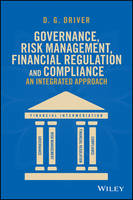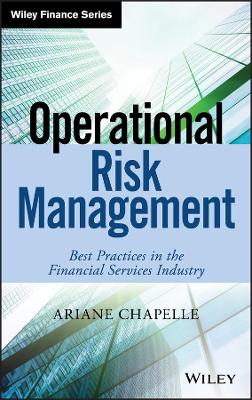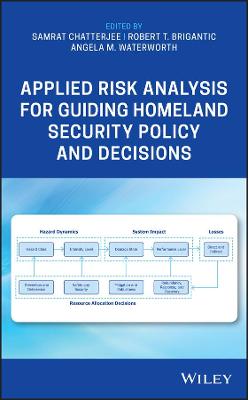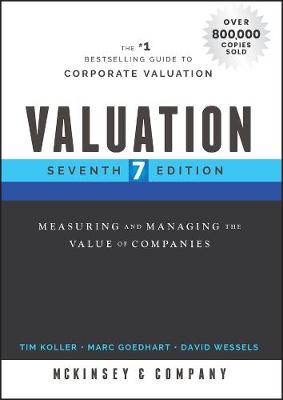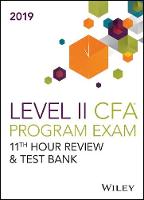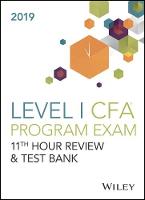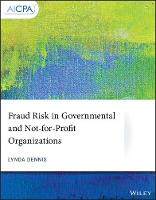Bubble Value at Risk
 -15%
portes grátis
-15%
portes grátis
Bubble Value at Risk
A Countercyclical Risk Management Approach
Wong, Max C. Y.
John Wiley & Sons Inc
04/2013
320
Dura
Inglês
9781118550342
15 a 20 dias
682
Foreword xv
Preface xvii
Acknowledgments xxi
PART ONE Background
CHAPTER 1 Introduction 3
1.1 The Evolution of Riskometer 4
1.2 Taleb's Extremistan 6
1.3 The Turner Procyclicality 7
1.4 The Common Sense of Bubble Value-at-Risk (BuVaR) 8
Notes 13
CHAPTER 2 Essential Mathematics 15
2.1 Frequentist Statistics 15
2.2 Just Assumptions 18
2.3 Quantiles, VaR, and Tails 26
2.4 Correlation and Autocorrelation 29
2.5 Regression Models and Residual Errors 35
2.6 Significance Tests 38
2.7 Measuring Volatility 41
2.8 Markowitz Portfolio Theory 45
2.9 Maximum Likelihood Method 48
2.10 Cointegration 50
2.11 Monte Carlo Method 52
2.12 The Classical Decomposition 55
2.13 Quantile Regression Model 58
2.14 Spreadsheet Exercises 62
Notes 64
PART TWO Value at Risk Methodology
CHAPTER 3 Preprocessing 67
3.1 System Architecture 67
3.2 Risk Factor Mapping 70
3.3 Risk Factor Proxies 75
3.4 Scenario Generation 76
3.5 Basic VaR Specification 79
Notes 81
CHAPTER 4 Conventional VaR Methods 83
4.1 Parametric VaR 84
4.2 Monte Carlo VaR 89
4.3 Historical Simulation VaR 93
4.4 Issue: Convexity, Optionality, and Fat Tails 96
4.5 Issue: Hidden Correlation 102
4.6 Issue: Missing Basis and Beta Approach 104
4.7 Issue: The Real Risk of Premiums 106
4.8 Spreadsheet Exercises 107
Notes 108
CHAPTER 5 Advanced VaR Methods 111
5.1 Hybrid Historical Simulation VaR 111
5.2 Hull-White Volatility Updating VaR 113
5.3 Conditional Autoregressive VaR (CAViaR) 114
5.4 Extreme Value Theory VaR 116
5.5 Spreadsheet Exercises 122
Notes 124
CHAPTER 6 VaR Reporting 125
6.1 VaR Aggregation and Limits 125
6.2 Diversification 126
6.3 VaR Analytical Tools 127
6.4 Scaling and Basel Rules 132
6.5 Spreadsheet Exercises 136
Notes 137
CHAPTER 7 The Physics of Risk and Pseudoscience 139
7.1 Entropy, Leverage Effect, and Skewness 140
7.2 Volatility Clustering and the Folly of i.i.d. 144
7.3 "Volatility of Volatility" and Fat Tails 145
7.4 Extremistan and the Fourth Quadrant 148
7.5 Regime Change, Lagging Riskometer, and Procyclicality 151
7.6 Coherence and Expected Shortfall 154
7.7 Spreadsheet Exercises 156
Notes 156
CHAPTER 8 Model Testing 159
8.1 The Precision Test 159
8.2 The Frequency Back Test 160
8.3 The Bunching Test 163
8.4 The Whole Distribution Test 165
8.5 Spreadsheet Exercises 167
Notes 167
CHAPTER 9 Practical Limitations of VaR 169
9.1 Depegs and Changes to the Rules of the Game 169
9.2 Data Integrity Problems 171
9.3 Model Risk 172
9.4 Politics and Gaming 174
Notes 175
CHAPTER 10 Other Major Risk Classes 177
10.1 Credit Risk (and CreditMetrics) 177
10.2 Liquidity Risk 182
10.3 Operational Risk 187
10.4 The Problem of Aggregation 190
10.5 Spreadsheet Exercises 195
Notes 195
PART THREE The Great Regulatory Reform
CHAPTER 11 Regulatory Capital Reform 199
11.1 Basel I and Basel II 199
11.2 The Turner Review 202
11.3 Revisions to Basel II Market Risk Framework (Basel 2.5) 206
11.4 New Liquidity Framework 211
11.5 The New Basel III 212
11.6 The New Framework for the Trading Book 214
11.7 The Ideal Capital Regime 215
Notes 217
CHAPTER 12 Systemic Risk Initiatives 221
12.1 Soros' Reflexivity, Endogenous Risks 221
12.2 CrashMetrics 226
12.3 New York Fed CoVaR 230
12.4 The Austrian Model and BOE RAMSI 233
12.5 The Global Systemic Risk Regulator 238
12.6 Spreadsheet Exercises 240
Notes 241
PART FOUR Introduction to Bubble Value-at-Risk (BuVaR)
CHAPTER 13 Market BuVaR 245
13.1 Why an Alternative to VaR? 245
13.2 Classical Decomposition, New Interpretation 247
13.3 Measuring the Bubble 250
13.4 Calibration 254
13.5 Implementing the Inflator 257
13.6 Choosing the Best Tail-Risk Measure 259
13.7 Effect on Joint Distribution 262
13.8 The Scope of BuVaR 264
13.9 How Good Is the BuVaR Buffer? 265
13.10 The Brave New World 268
13.11 Spreadsheet Exercises 271
Notes 271
CHAPTER 14 Credit BuVaR 273
14.1 The Credit Bubble VaR Idea 273
14.2 Model Formulation 276
14.3 Behavior of Response Function 278
14.4 Characteristics of Credit BuVaR 280
14.5 Interpretation of Credit BuVaR 282
14.6 Spreadsheet Exercises 284
Notes 284
CHAPTER 15 Acceptance Tests 285
15.1 BuVaR Visual Checks 285
15.2 BuVaR Event Timing Tests 297
15.3 BuVaR Cyclicality Tests 304
15.4 Credit BuVaR Parameter Tuning 306
Notes 313
CHAPTER 16 Other Topics 315
16.1 Diversification and Basis Risks 315
16.2 Regulatory Reform and BuVaR 317
16.3 BuVaR and the Banking Book: Response Time as Risk 319
16.4 Can BuVaR Pick Tops and Bottoms Perfectly? 321
16.5 Postmodern Risk Management 321
16.6 Spreadsheet Exercises 323
Note 323
CHAPTER 17 Epilogue: Suggestions for Future Research 325
Note 327
About the Website 329
Bibliography 331
Index 337
Foreword xv
Preface xvii
Acknowledgments xxi
PART ONE Background
CHAPTER 1 Introduction 3
1.1 The Evolution of Riskometer 4
1.2 Taleb's Extremistan 6
1.3 The Turner Procyclicality 7
1.4 The Common Sense of Bubble Value-at-Risk (BuVaR) 8
Notes 13
CHAPTER 2 Essential Mathematics 15
2.1 Frequentist Statistics 15
2.2 Just Assumptions 18
2.3 Quantiles, VaR, and Tails 26
2.4 Correlation and Autocorrelation 29
2.5 Regression Models and Residual Errors 35
2.6 Significance Tests 38
2.7 Measuring Volatility 41
2.8 Markowitz Portfolio Theory 45
2.9 Maximum Likelihood Method 48
2.10 Cointegration 50
2.11 Monte Carlo Method 52
2.12 The Classical Decomposition 55
2.13 Quantile Regression Model 58
2.14 Spreadsheet Exercises 62
Notes 64
PART TWO Value at Risk Methodology
CHAPTER 3 Preprocessing 67
3.1 System Architecture 67
3.2 Risk Factor Mapping 70
3.3 Risk Factor Proxies 75
3.4 Scenario Generation 76
3.5 Basic VaR Specification 79
Notes 81
CHAPTER 4 Conventional VaR Methods 83
4.1 Parametric VaR 84
4.2 Monte Carlo VaR 89
4.3 Historical Simulation VaR 93
4.4 Issue: Convexity, Optionality, and Fat Tails 96
4.5 Issue: Hidden Correlation 102
4.6 Issue: Missing Basis and Beta Approach 104
4.7 Issue: The Real Risk of Premiums 106
4.8 Spreadsheet Exercises 107
Notes 108
CHAPTER 5 Advanced VaR Methods 111
5.1 Hybrid Historical Simulation VaR 111
5.2 Hull-White Volatility Updating VaR 113
5.3 Conditional Autoregressive VaR (CAViaR) 114
5.4 Extreme Value Theory VaR 116
5.5 Spreadsheet Exercises 122
Notes 124
CHAPTER 6 VaR Reporting 125
6.1 VaR Aggregation and Limits 125
6.2 Diversification 126
6.3 VaR Analytical Tools 127
6.4 Scaling and Basel Rules 132
6.5 Spreadsheet Exercises 136
Notes 137
CHAPTER 7 The Physics of Risk and Pseudoscience 139
7.1 Entropy, Leverage Effect, and Skewness 140
7.2 Volatility Clustering and the Folly of i.i.d. 144
7.3 "Volatility of Volatility" and Fat Tails 145
7.4 Extremistan and the Fourth Quadrant 148
7.5 Regime Change, Lagging Riskometer, and Procyclicality 151
7.6 Coherence and Expected Shortfall 154
7.7 Spreadsheet Exercises 156
Notes 156
CHAPTER 8 Model Testing 159
8.1 The Precision Test 159
8.2 The Frequency Back Test 160
8.3 The Bunching Test 163
8.4 The Whole Distribution Test 165
8.5 Spreadsheet Exercises 167
Notes 167
CHAPTER 9 Practical Limitations of VaR 169
9.1 Depegs and Changes to the Rules of the Game 169
9.2 Data Integrity Problems 171
9.3 Model Risk 172
9.4 Politics and Gaming 174
Notes 175
CHAPTER 10 Other Major Risk Classes 177
10.1 Credit Risk (and CreditMetrics) 177
10.2 Liquidity Risk 182
10.3 Operational Risk 187
10.4 The Problem of Aggregation 190
10.5 Spreadsheet Exercises 195
Notes 195
PART THREE The Great Regulatory Reform
CHAPTER 11 Regulatory Capital Reform 199
11.1 Basel I and Basel II 199
11.2 The Turner Review 202
11.3 Revisions to Basel II Market Risk Framework (Basel 2.5) 206
11.4 New Liquidity Framework 211
11.5 The New Basel III 212
11.6 The New Framework for the Trading Book 214
11.7 The Ideal Capital Regime 215
Notes 217
CHAPTER 12 Systemic Risk Initiatives 221
12.1 Soros' Reflexivity, Endogenous Risks 221
12.2 CrashMetrics 226
12.3 New York Fed CoVaR 230
12.4 The Austrian Model and BOE RAMSI 233
12.5 The Global Systemic Risk Regulator 238
12.6 Spreadsheet Exercises 240
Notes 241
PART FOUR Introduction to Bubble Value-at-Risk (BuVaR)
CHAPTER 13 Market BuVaR 245
13.1 Why an Alternative to VaR? 245
13.2 Classical Decomposition, New Interpretation 247
13.3 Measuring the Bubble 250
13.4 Calibration 254
13.5 Implementing the Inflator 257
13.6 Choosing the Best Tail-Risk Measure 259
13.7 Effect on Joint Distribution 262
13.8 The Scope of BuVaR 264
13.9 How Good Is the BuVaR Buffer? 265
13.10 The Brave New World 268
13.11 Spreadsheet Exercises 271
Notes 271
CHAPTER 14 Credit BuVaR 273
14.1 The Credit Bubble VaR Idea 273
14.2 Model Formulation 276
14.3 Behavior of Response Function 278
14.4 Characteristics of Credit BuVaR 280
14.5 Interpretation of Credit BuVaR 282
14.6 Spreadsheet Exercises 284
Notes 284
CHAPTER 15 Acceptance Tests 285
15.1 BuVaR Visual Checks 285
15.2 BuVaR Event Timing Tests 297
15.3 BuVaR Cyclicality Tests 304
15.4 Credit BuVaR Parameter Tuning 306
Notes 313
CHAPTER 16 Other Topics 315
16.1 Diversification and Basis Risks 315
16.2 Regulatory Reform and BuVaR 317
16.3 BuVaR and the Banking Book: Response Time as Risk 319
16.4 Can BuVaR Pick Tops and Bottoms Perfectly? 321
16.5 Postmodern Risk Management 321
16.6 Spreadsheet Exercises 323
Note 323
CHAPTER 17 Epilogue: Suggestions for Future Research 325
Note 327
About the Website 329
Bibliography 331
Index 337


